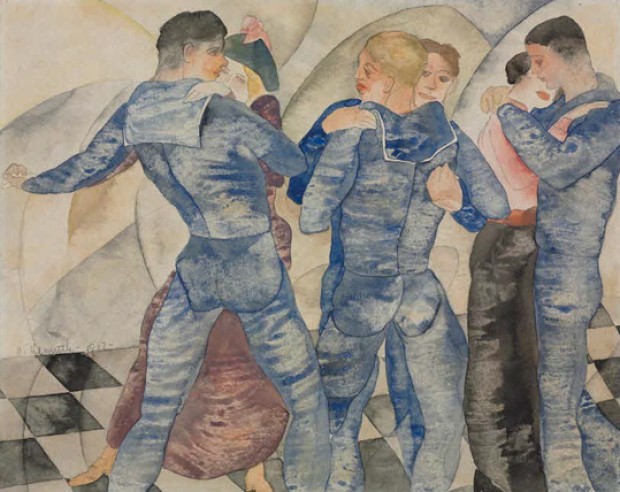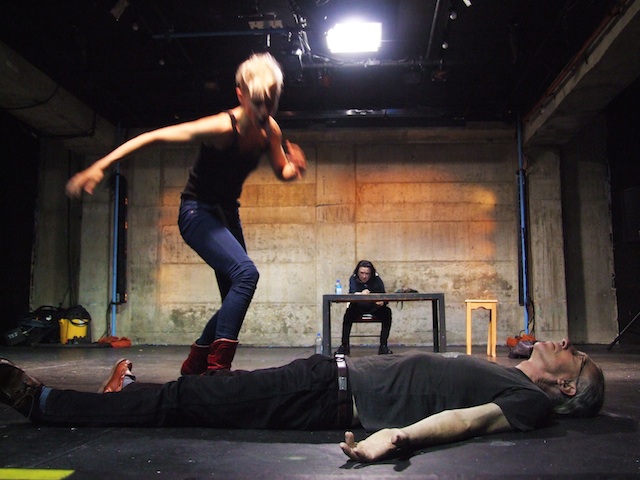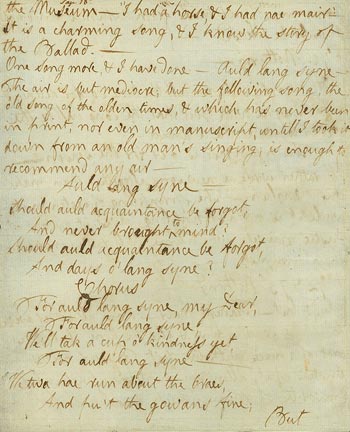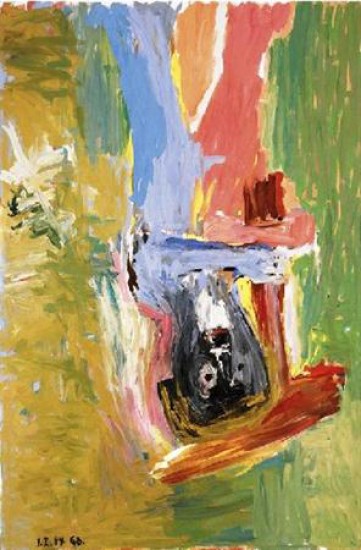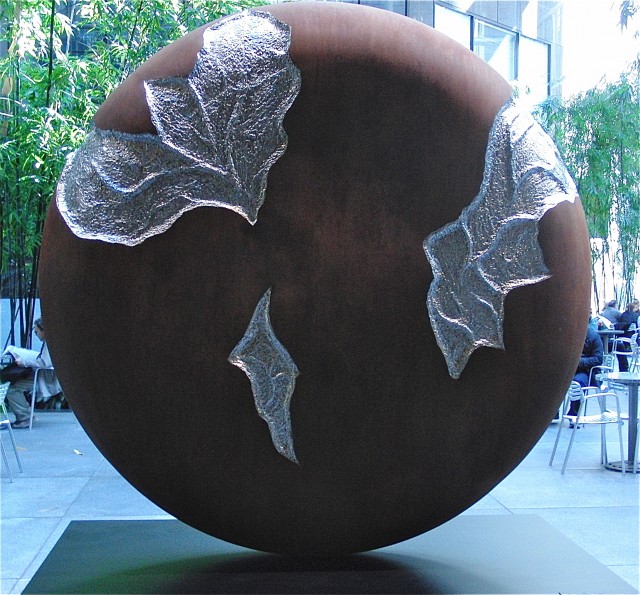
Jonathan Prince’s “Torn Steel” has been extended through January 10 in Midtown (photo by twi-ny/mdr)
Sculpture Garden at 590 Madison Avenue
590 Madison Ave. at 57th St.
Extended through January 10, free, 8:00 am – 10:00 pm
Admission: free
www.jonathanprince.com
torn steel slideshow
There are only two days left to see Massachusetts-based artist Jonathan Prince’s “Torn Steel” in the atrium at 590 Madison Ave., where he has installed several of his large-scale sculptures in which he tears open their skin to reveal their insides, which are not usually visible to viewers. Originally set to close on November 18 but extended through January 10, “Torn Steel” consists of a series of geometric forms with parts removed, as if the pieces are living works that have been ripped open and injured, giving them a fragile, vulnerable quality despite their obvious heft and density. “Totem II” is like a tree rising from the earth but with part of it sliced away. “Torus 340” resembles a donut with a hole, a big bite taken out of it, while the circular “Disc Fragment” has silver pools of blood across it. And “Vestigial Block II” is a giant cube with a shimmering waterfall in one corner. The sculptures, which reference Richard Serra and Isamu Noguchi and are achieved through a blacksmithing process, reside peacefully in the atrium among the trees, while nearby, in the lobby of 590 Madison Ave., his significantly smaller 2007 Zimbabwe granite “Lightbox” remains on permanent view.
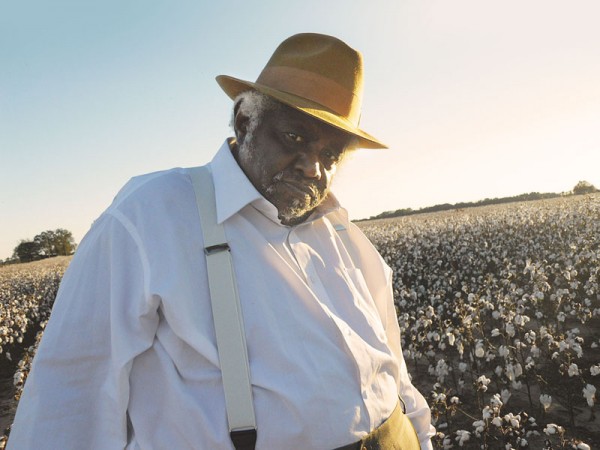
 Curator Sylvia Savadjian and the Maysles Institute have put together a terrific program for Wednesday night, offering audiences the opportunity to meet one of the most fascinating characters they’re ever likely to come upon. Born in 1945 in rural Georgia to a mother who abandoned him when he was three months old, Winfred Rembert grew up picking cotton, dropped out of high school, spent time in jail and on a chain gang, and lost nearly all his teeth. But it was his years behind bars that turned him into a new man, as he learned to read and write and developed a unique art style that soon had him carving out the tales of his life on leather. Longtime journalist, producer, and writer Vivian Ducat tells Rembert’s amazing story in her engaging feature-length debut, All Me: The Life and Times of Winfred Rembert. Ducat follows the oversized Rembert, who regularly bubbles over with joy, as he returns for a show in Cuthbert, Georgia, and prepares for a big opening in New York City. “I know he’s here for a reason,” his sister Lorraine says in the film. “To help people and to be a witness through his art.” Throughout All Me, Rembert discusses many of his works, in which he uses indelible dyes on carved leather, in great detail, each one representing a part of his life, focusing on being a poor black man in a white-dominated society. It is quite poignant late in the film when he points out that his art seems to be most appreciated by whites even though it is meant as a visual history for blacks. But what really makes the documentary work is not just that Rembert is such an enigmatic, larger-than-life figure but that his art is exceptional, his self-taught, folksy style reminiscent of such forebears as Romare Bearden and Jacob Lawrence, capturing a deeply personal, intensely intimate part of the black experience in twentieth-century America. Rembert will be at the Maysles Institute on January 11 for a reception, a screening of All Me, and what should be an enlightening Q&A with Ducat. And if you’re as captivated by Rembert’s story as we are, you can see more of his work in his “Amazing Grace” exhibition, running January 21 through May 5 at the
Curator Sylvia Savadjian and the Maysles Institute have put together a terrific program for Wednesday night, offering audiences the opportunity to meet one of the most fascinating characters they’re ever likely to come upon. Born in 1945 in rural Georgia to a mother who abandoned him when he was three months old, Winfred Rembert grew up picking cotton, dropped out of high school, spent time in jail and on a chain gang, and lost nearly all his teeth. But it was his years behind bars that turned him into a new man, as he learned to read and write and developed a unique art style that soon had him carving out the tales of his life on leather. Longtime journalist, producer, and writer Vivian Ducat tells Rembert’s amazing story in her engaging feature-length debut, All Me: The Life and Times of Winfred Rembert. Ducat follows the oversized Rembert, who regularly bubbles over with joy, as he returns for a show in Cuthbert, Georgia, and prepares for a big opening in New York City. “I know he’s here for a reason,” his sister Lorraine says in the film. “To help people and to be a witness through his art.” Throughout All Me, Rembert discusses many of his works, in which he uses indelible dyes on carved leather, in great detail, each one representing a part of his life, focusing on being a poor black man in a white-dominated society. It is quite poignant late in the film when he points out that his art seems to be most appreciated by whites even though it is meant as a visual history for blacks. But what really makes the documentary work is not just that Rembert is such an enigmatic, larger-than-life figure but that his art is exceptional, his self-taught, folksy style reminiscent of such forebears as Romare Bearden and Jacob Lawrence, capturing a deeply personal, intensely intimate part of the black experience in twentieth-century America. Rembert will be at the Maysles Institute on January 11 for a reception, a screening of All Me, and what should be an enlightening Q&A with Ducat. And if you’re as captivated by Rembert’s story as we are, you can see more of his work in his “Amazing Grace” exhibition, running January 21 through May 5 at the 
